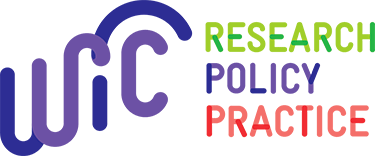The authors investigated the impact of the WIC Program on the eating behaviors of preschool children in southeastern Idaho. researchers found that after 6 months on WIC, the mean overall Healthy Eating Index score and subscores for vegetables, fruits, and meats increased significantly.
The researchers examines cost-containment practices in six states, including interviews with the various stakeholders and analysis of WIC administrative data. The authors reached three major conclusions: (1) Cost-containment practices reduced average food package costs by 0.2% to 21.4%, depending on practices implemented and local conditions; (2) the cost-containment practices had few adverse outcomes for WIC participants; and (3) administrative costs of the practices were low, averaging about 1.5% of food package savings.
This study investigated whether WIC Infant Food Package Issuance data are a valid source of information about breastfeeding practices. The study concluded that WIC Infant Food Package Issuance data are, indeed, a valid source of information about breastfeeding: Actual breastfeeding practices were in agreement with the type of food package issued. With appropriate funding support, WIC administrative data should be considered for use in nationwide breastfeeding surveillance and monitoring system.
The objective of this study was to identify the unintended consequences of the WIC formula rebate on the proportion of mothers who breastfed their babies. The results showed that the high and increasing cost of the formula might perpetuate the idea that WICs formula packages are of greater value than the breastfeeding packages that WIC offers.
A public health nutrition intervention was developed in Korea, modeled after WIC. Using combinations of 11 different food items, six food packages were developed. The intervention included nutrition education and promotion of breastfeeding. The result of a 3-year pilot study will be reported separately, along with the outcomes of the nationwide implementation of the NutriPlus(+) nutrition education program in 2008
This study explored reasons for high rates of formula supplementation of breastfeeding newborns enrolled in WIC and the limited use of the WIC expanded food package for mothers who breastfed. Results showed that the expanded food package for mothers was not valued. However, free supplemental formula was highly valued. Lack of access to breast pumps, the unacceptability of pumping in the workplace, and difficulties with nursing in public all contributed to formula supplementation.
“In 2013, there were 3.6 million young parents (those ages 18 to 24) living with their children in the United States.1 These young adults face particular challenges gaining the skills, […]
The report details the potential effects of reductoins in WIC funding for the program and participants (2017-2018).
The study implemented a farmers market near a WIC clinic for 24 weeks with 12 WIC armers and increased redemption from 51.3% - 62.9% in a North Carolina County,
If WIC age-eligibility is increased from age 5 years to 6 years, 1.47 percent of newly eligible 5-year-olds' families increase their food purchasing power, and become food secure.
